How does NASA engineer sit at home controlling robotic probes on Mars?
In the context of the COVID-19 epidemic still raging in the US, many businesses in the country have been forced to send employees to work online remotely. The US Air and Space Administration (NASA) is no exception. All NASA centers have allowed their employees to work from home, except for a few key departments.
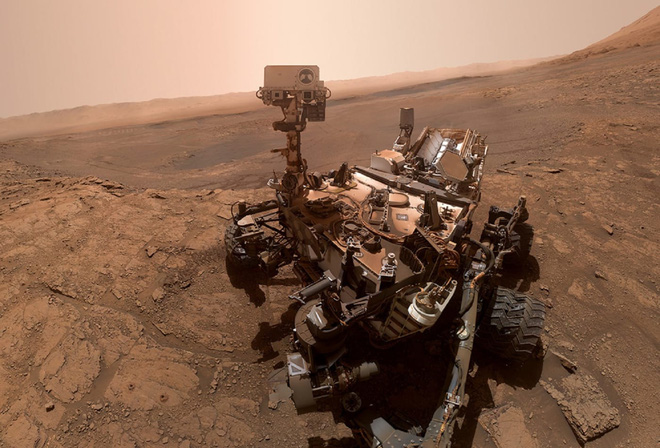
Self-propelled vehicle Curiosity
Due to the nature of the work, the Curiosity car drivers often have to work with hundreds of scientists from research institutes around the world. As a result, when a remote situation occurs, the technical infrastructure available at NASA can be used immediately, instead of having to set from zero.
On March 17, before the employees left work, they were given a headset, computer screens and many other essential equipment for use in communications and work by NASA. Employees lined up on the edge of NASA headquarters, standing far enough away from each other with the tight masks, in turn to receive the equipment needed.
Solve communication problems at work
At NASA, the personnel involved in the Curiosity self-driving car project are divided into two main groups. One group is in charge of Uplink (sending data from the Earth to autonomous vehicles), while the other group is in charge of Downlink (processing data sent from self-propelled vehicles to Earth).
Concentrated employees work in a fairly large room at NASA headquarters - where they can easily communicate directly with each other during the operation of Curiosity.
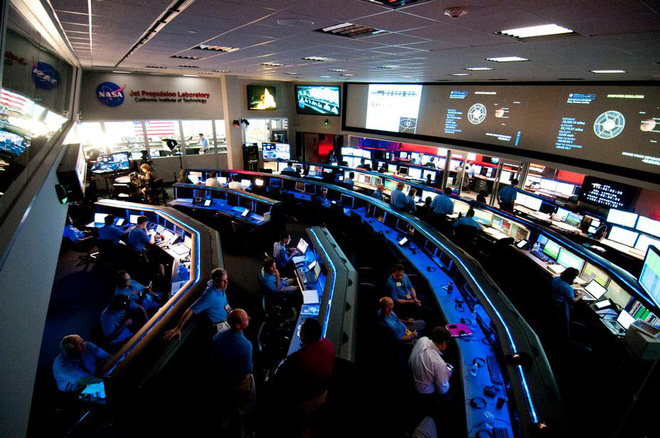
Curiosity self-driving car's working room at NASA headquarters
For a particularly complex project like Curiosity, maintaining the rhythm of work among the departments is paramount. Every employee must work closely together to get the job done. At one point, to successfully execute a series of commands to control Curiosity, it required the support of 20 people. However, when working from home, communication between group members is much more difficult.
To solve this problem, a solution has been devised. Employees use headsets, hold a series of online meetings, and simultaneously launch a series of chat software to 'simulate' the atmosphere at NASA office.
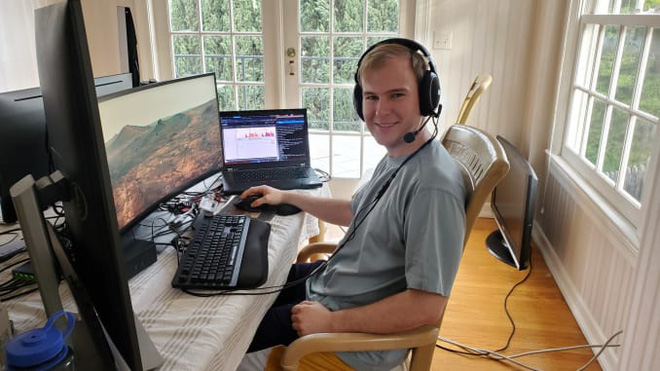
NASA staff must turn on lots of chat windows, use headphones to simulate the atmosphere of working in the office
" At any given time, I'm probably going to have about 15 chat channels at a time. There's more work than usual ," said a staff member of the operations team Curiosity.
" We set up a series of online meetings at the same time. I'll use one earphone to talk privately with the self-driving car control group. Then I make a call to another online chat group and listen with on the other headset. Just like that, I went back and forth with these two online chat groups for 8 hours a day "
Use 3D glasses to watch movies to drive Mars self-propelled vehicles
Curiosity self-propelled vehicle is equipped with a special 3D camera, which is capable of capturing and sending 3-dimensional images of Mars to Earth. Thanks to the camera acting as a 'remote eye', the operating engineers are able to understand the terrain the vehicle is passing, including the slope or obstacles to avoid, from which Curiosity can be controlled. go in the right direction.
However, to be able to view the 3D images sent by Curiosity, operating engineers must wear a high-tech 3D glasses to help them get the most realistic and clear view as if standing online. more on Mars.
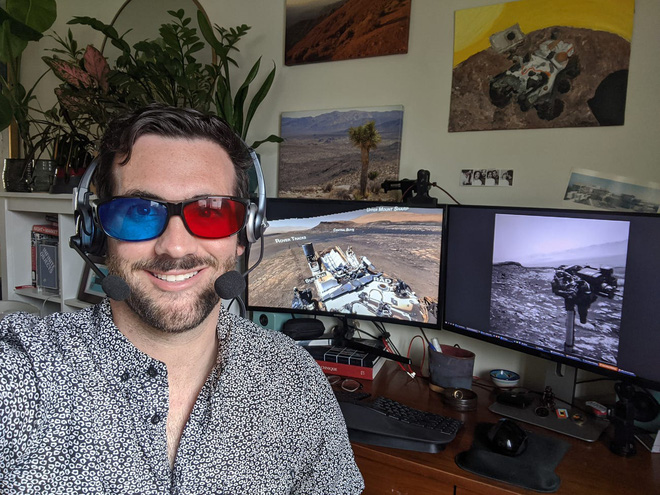
NASA engineers use blue and red 3D glasses to control the Mars exploration robot
Worth mentioning, this type of glasses also requires users to own a set of 'super terrible' configurations. For NASA employees, equipping a PC with a similar configuration when working from home is something. completely impossible.
Therefore, NASA found a 'less advanced' technology solution, allowing the operation team to use the glasses normally seen when watching 3D movies in theaters, with two distinctive blue-red colors. Surprisingly, even using "archaic" technology, the team of experts at NASA can still conduct Curiosity to conduct exploration activities as usual.
Mission finished
After a lot of careful preparation, on March 20 - the first working day at home, a series of control commands sent from Earth to self-propelled vehicles Curiosity was executed. The robot drilled to sample at a location named "Edinburgh" on Mars.
Soon afterward, Curiosity continued to move to another location to search for possible samples of rock. In all, this self-driving car has traveled a 166m-long distance since the NASA operating team had to work from home.
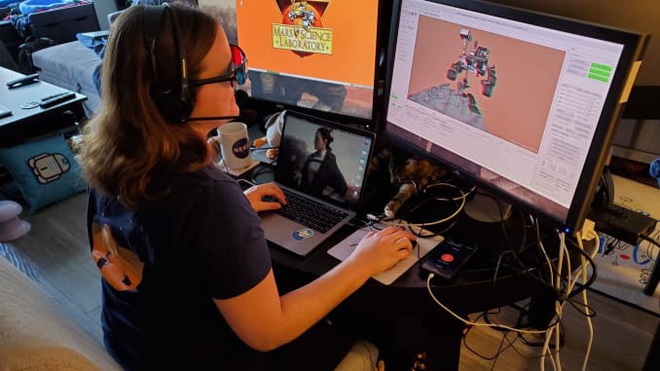
Thanks to the help of technology, home control is as effective as working in the office
For NASA employees, the control of Curiosity also has a special meaning during the time the United States takes social isolation measures. Accordingly, the self-discovery of a planet hundreds of millions of kilometers from Earth makes them forget the sense of mystery at home due to COVID-19.
"One of the best things about controlling Mars probes is that every day we discover places we have never been before. Besides, we also see pictures of photo that no one on Earth has ever seen before, "said an engineer in the Curiosity operations team.
You should read it
- New simulation technology significantly improves safety for self-driving cars
- NASA and great discoveries about the Solar System
- Reveal the best place to find life on Mars
- The Vietnam Aviation Administration officially banned carrying MacBook Pro 15 computers on aircraft because of the risk of fire
- 16 of the best free chat software for the job
- What do you know about software technology P7
 The team created a microwave-jet plasma engine, wishing to replace the existing aircraft engine
The team created a microwave-jet plasma engine, wishing to replace the existing aircraft engine Why do scientists get worms to drink and make them spin like this?
Why do scientists get worms to drink and make them spin like this? CO2 capture filter: A groundbreaking idea for the post-carbon industry
CO2 capture filter: A groundbreaking idea for the post-carbon industry China invented something that could replace jet engines
China invented something that could replace jet engines Discover the black hole closest to Earth, located in the star system that we can see with the naked eye
Discover the black hole closest to Earth, located in the star system that we can see with the naked eye This is an AI system that can turn people into animals and vice versa
This is an AI system that can turn people into animals and vice versa